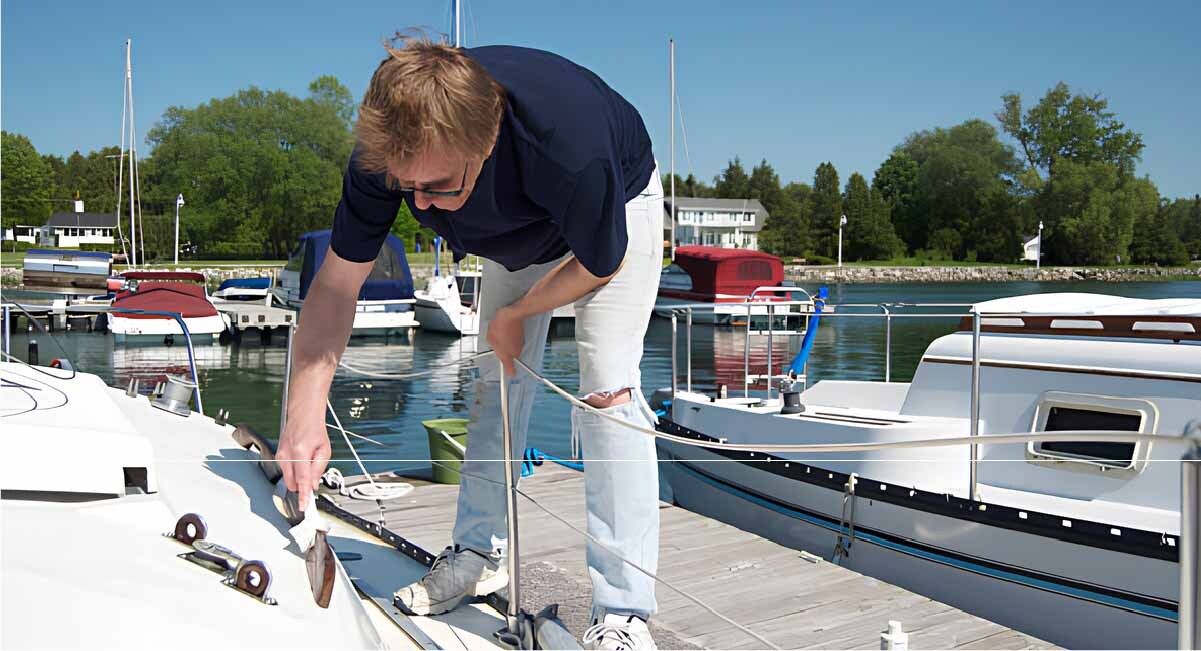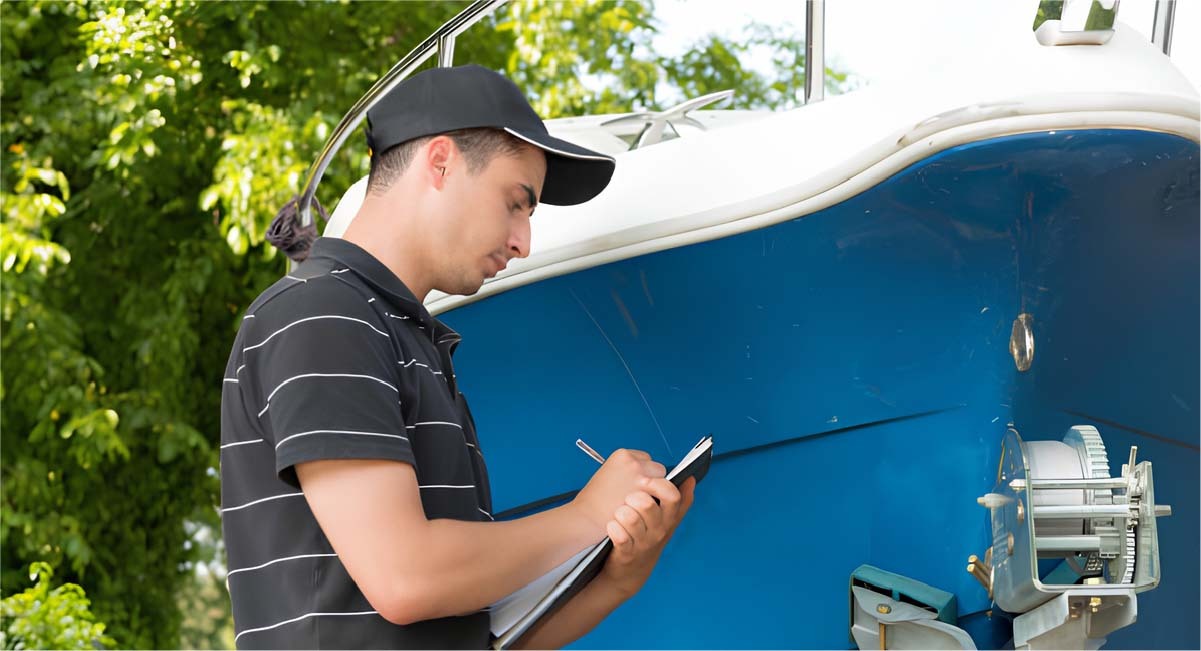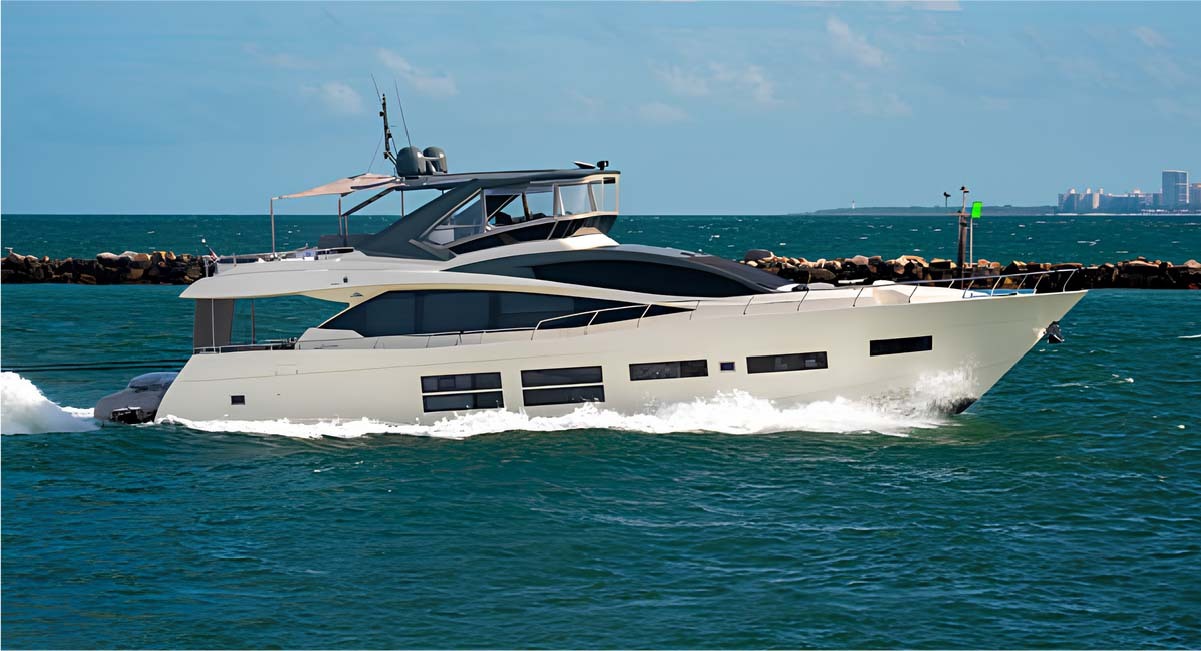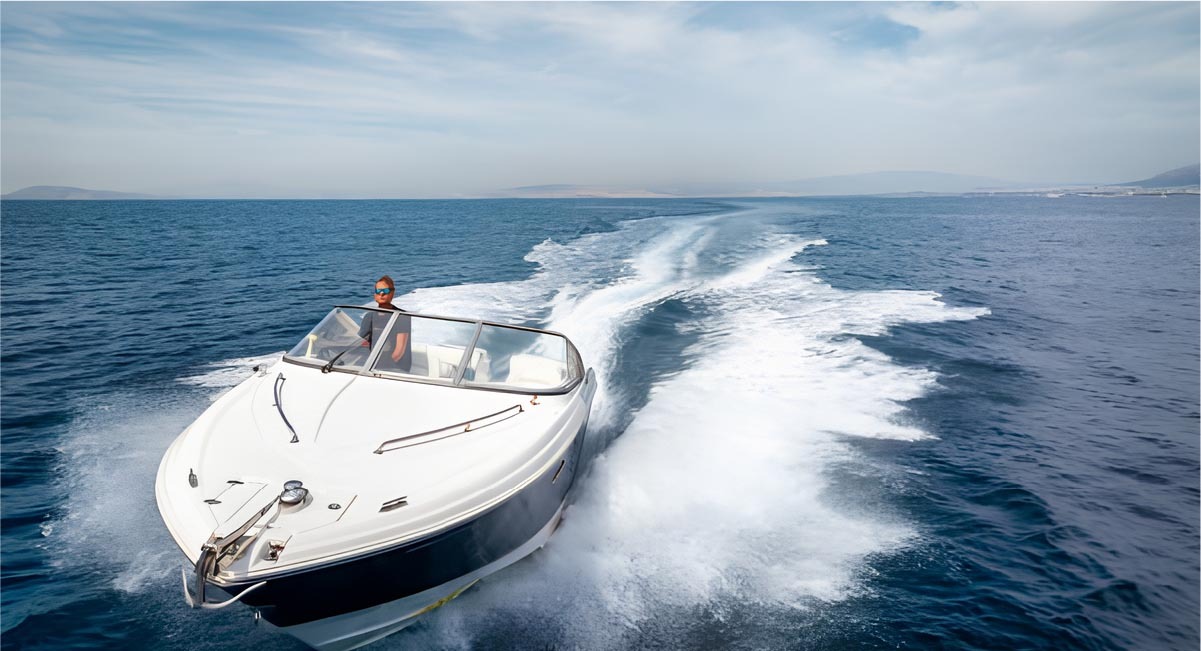8 Pro Tips for Prepping Your Boat for Sale
Listing your boat is just the first step, how you present it really makes the difference. Whether you’re upgrading, scaling back, or taking a break from the water, a well-prepped vessel can help you get the best return. Today’s buyers are informed and discerning. They want more than pretty pictures, they want real evidence that your boat is clean, maintained, and ready for its next journey.
From the seller's point of view, comprehensive pre-sale preparation helps command a better price, prevent renegotiation, and increase the likelihood of a speedy sale. A well-prep boat demonstrates transparency and pride of ownership, two attributes that every customer values. It provides buyers with peace of mind and lessens the surprise of future upkeep.
We'll take a thorough look at every step of the process in this prep guide, from decluttering, recordkeeping, and photography to hull maintenance and engine diagnostics. These tips will help you make sure your boat looks, performs, and sells at its best.
1. Exterior Cleaning & Detailing Your Boat Thoroughly

istock/liveslow
The first impression of your boat begins with its exterior. Getting a professional detailing job means more than just using soap and water; it does a lot more than just cleaning. This kind of detail cleaning helps your boat look good to potential buyers. You've taken the time to look after the boat, that matters. Buyers notice when a boat is well-kept.
Explore our Outboard Engine Parts for maintenance essentials.
i. Hull Washing
Begin with a high-pressure freshwater rinse to eliminate salt, algae, and grime. Use marine-safe detergents that won’t degrade gelcoat or anti-fouling paint. If there’s yellowing or discoloration along the hull, apply an oxalic acid-based hull cleaner to break down mineral stains and organic buildup.
ii. Oxidation Removal
If the gelcoat appears chalky, use a rotary buffer with a medium-cut rubbing compound to cut through oxidized layers. Maintain a 45-degree overlapping pattern and keep buffer RPM between 1800–2500 for even coverage. Follow up with a fine finishing polish to restore luster.
iii. Wax Application
Apply a polymer-based marine wax (avoid car wax) using a dual-action polisher at low speed. These waxes provide UV protection and water-beading for up to 3–4 months.
iv. Teak and Brightwork Maintenance
For teak decks or trim, use a two-part teak cleaner and brightener to neutralize graying and oil residues. Once dried, sand lightly and apply teak oil or synthetic sealer. Polish stainless-steel cleats and rails with a marine-grade metal polish to eliminate rust pitting. You can also buy used marine parts to replace your defected parts for better performance.
v. Waterline Maintenance
Use a dedicated scum line cleaner for buildup along the waterline. Inspect for osmosis blisters on fiberglass boats; if any are found, consult a specialist for gelcoat repair or barrier coat reapplication.
Check out Sterndrive & I/O Engine Parts for detailing components.
2. Interior Deep Cleaning and Repairs

istock/reebinator
Buyers scrutinize the cabin for odors, mold, and signs of poor maintenance. A deep clean means eliminating contaminants, not masking them, ensuring your boat's interior looks fresh and well-maintained. This step not only appeals to buyers but can also prevent price negotiations based on unaddressed issues.
i. Marine Carpet and Fabric Cleaning
Use a hot water extractor or commercial-grade steam cleaner with an enzymatic solution to remove odors and embedded dirt. Apply mold and mildew inhibitors post-cleaning to prolong freshness.
ii. Upholstery Repairs
Examine all seams and stitching. Repair with UV-resistant polyester thread using a sailmaker’s needle or take to a marine upholsterer for rework. Small nicks in vinyl can be fixed with heat-activated repair kits.
iii. Bilge Cleaning
Remove residual water and scrub bilges with a non-toxic degreaser. Look for oil sheens, which may indicate engine leaks. Rinse thoroughly and install bilge odor neutralizers before showings.
iv. Air Circulation
Replace air vent screens and clean intake/exhaust fans. Run a marine-grade dehumidifier for 24–48 hours to draw out excess moisture and prevent musty smells.
v. Wood Surface Restoration
Sand and re-varnish scratched or dull surfaces with marine varnish. Maintain at least 4–6 coats with light sanding between.
Browse our Used Outboard Engine Parts for components that can aid in interior repairs.
3. Mechanical and System Checks

istock/Zinkevych
Functionality is paramount. A potential buyer will likely bring a marine surveyor to inspect these components, so ensuring everything works optimally can prevent unpleasant surprises during negotiations.
Key areas to inspect are.
i. Engine Diagnostics
Conduct a compression test across all cylinders, values should be within 10% variance. Remove and inspect spark plugs for ash, carbon fouling, or oil residue. Drain and check engine oil using a dipstick color chart for signs of contamination to make it work properly and to extend its life.
ii. Cooling System
Backflush the raw water cooling circuit. Check impellers in the water pump for wear, look for missing or cracked blades. Use an infrared thermometer to confirm thermostat performance under load.
iii. Electrical System
Test battery voltage (12.6V = fully charged) using a multimeter. Perform a load test under starter motor conditions. Inspect terminal posts for corrosion and apply dielectric grease to prevent future buildup.
iv. Navigation and Electronics
Power on GPS/chartplotters, radar, and sonar units. Test transducer function and verify software firmware is current. Replace defective sensors or cables.
Follow our Powerhead & Gearcase Break-In Instructions for maintenance guidance.
v. Hydraulic Steering and Trim Systems
Cycle the steering from lock to lock. Inspect hydraulic rams for seepage, and top off hydraulic fluid reservoirs. Operate trim tabs to full extension and retraction.
vi. Fuel System
Check all fuel hoses for brittleness or cracking. Replace primary and secondary filters, and perform a clear-glass fuel sample test, this help to enhance the boat's fuel efficiency, as contaminated fuel may appear cloudy or layered.
Ensure optimal performance with our New Outboard Engine Parts.
4. Remove Personal Items and Declutter

istock/Stanislav Smoliakov
Staging the boat lets potential buyers visualize their ownership without distractions, making the viewing experience much more inviting. A clutter-free space highlights the boat’s best features, and ensures buyers aren’t focused on things that don’t come with the sale.
- Inventory Removal: Create a checklist of personal and non-included items, remove life jackets, charts, electronics not included in sale, and all perishables.
- Organize Storage: Clean out and sanitize lockers. Replace gas struts or rubber gaskets on hatch lids as needed. Re-lubricate latches and hinges with marine-grade lithium grease.
- Neutral Presentation: Eliminate artificial scents which may trigger suspicion. Instead, install battery-powered LED strip lighting to brighten spaces and highlight clean surfaces.
Consider our Used Outboard Engines for replacements or upgrades.
5. Gather All Documentation and Maintenance Records

istock/philipimage
Transparency is a key trust builder in any vessel transaction. Having a complete set of documents shows buyers that the boat has been well cared for and helps instill confidence in its overall condition.
- Maintenance Logs: Organize a spreadsheet with columns for date, service performed, parts used, technician (if applicable), and engine hours. Include receipts where possible.
- Title & Registration: Confirm the title is clean and lien-free. Ensure the HIN (Hull Identification Number) on the transom matches registration papers.
- Operating Manuals: Provide OEM manuals for engine, electronics, generator, inverter, etc. If missing, download official PDF versions and place them in a labeled binder.
- Upgrades and Warranty Info: Compile all warranty documents for electronics, engines, new upholstery, or installed systems. Note which warranties are transferable to the new owner.
6. Professional Photography & Marketing with a Compelling Listing

istock/simonkr
Online presentation is often your first and only chance to impress a buyer. High-quality photos and an informative, compelling listing will set your boat apart from others on the market.
Your online listing is your showroom. Professional presentation leads to more inquiries and better offers.
Tips for an Effective Listing
- Hire a Marine Photographer – Or use a high-quality camera with natural lighting.
- Show Key Features – Engine, cabin, deck, and unique selling points.
- Write a Detailed Description – Include specs, upgrades, and recent maintenance.
- List on Multiple Platforms – Use Boat Trader, YachtWorld, Facebook Marketplace, and Craigslist.
- Highlight the Boat’s Best Qualities – Fuel efficiency, low hours, or custom upgrades.
Don’t forget to leverage social media platforms and marine classifieds, such as Boat Trader, YachtWorld, and Facebook Marketplace. A detailed description, transparent pricing, and responsive communication will help generate more inquiries.
7. Set a Competitive Price

istock/Tverdohlib
Pricing your boat correctly is one of the most critical steps in ensuring a quick and profitable sale. Pricing too high can deter potential buyers, leaving your listing stagnant, while pricing too low means leaving money on the table. The key is to research the market thoroughly and find the perfect balance, a price that reflects your boat’s true value while remaining attractive to buyers.
This is how you can price your boat right for maximum profit.
Check Comparable Listings
Start by browsing online boat marketplaces like Boat Trader, YachtWorld, and local classifieds to see what similar boats are selling for. Use YachtWorld, NADA Guides, and SoldBoats.com to assess similar boats in your region and condition. Pay attention to:
- Make, model, year, and engine hours
- Condition (excellent, good, fair, poor)
- Geographical location (prices can vary by region)
- Recent upgrades (new electronics, repowered engines, etc.)
This will give you a realistic benchmark for pricing your boat competitively.
2. Factor in Condition & Upgrades
Buyers will pay more for a well-maintained boat with recent upgrades. Consider:
- Engine condition (low hours, regular servicing)
- Cosmetic condition (clean hull, fresh upholstery, no major damage)
- Added features (new GPS, stereo, or fishing gear)
If your boat has high-value improvements, adjust your price accordingly.
3. Consider Depreciation
Like cars, boats lose value over time. Older models naturally sell for less, but exceptional maintenance can slow depreciation. Research NADA Guides or BUC Valuation to see average depreciation rates for your boat’s make and model.
4. Be Open to Negotiation (But Set a Floor Price)
Most buyers will negotiate, so price your boat 5-10% higher than your target to allow room for haggling. However, set a firm minimum price you won’t go below to avoid selling at a loss.
8. Consider a Pre-Sale Survey or Inspection and Test Drives

istock/SHansche
Preemptively identifying issues helps avoid surprises during negotiations. This step ensures the boat is ready for sea trials and instills confidence in potential buyers.
Why a Survey & Test Drive Help:
- Identifies Hidden Issues – Fix them before negotiations.
- Builds Buyer Confidence – A clean survey report is a strong selling point.
- Allows Buyers to experience the Boat – A smooth test drive can seal the deal.
FAQs
When's the best time to sell a boat?
The best time to sell a boat is during the spring and summer months when demand is highest. Buyers are preparing for the boating season, and listings tend to receive more attention. Warmer weather also makes sea trials and inspections easier, increasing your chances of a quicker, higher-value sale.
How much does it cost to sell a boat?
Selling a boat can involve various costs such as professional detailing, minor repairs, photography, and online listing fees. Additional expenses may include broker commissions or surveyor evaluations. Altogether, these can range from a few hundred to several thousand dollars, depending on the boat's condition and your chosen selling method.
How long does it take to sell a boat?
The time it takes to sell a boat depends on factors like season, price, condition, and location. Boats priced competitively and in good condition can sell in just a few weeks, especially during spring and summer. Off-season listings or overpriced boats may take several months or longer to sell.
The Bottom Line
A clean, working boat draws attention fast. If you're moving on or planning to upgrade, now is the time to get serious about prep. Small repairs, clean surfaces, and a polished look make a big difference.
People who buy boats want something ready, they don't want surprises. They look for good care, fair prices, and clear signs the boat is ready to use.
Make time to deep clean. Check the parts. Fix what needs fixing. Price it right. Use good photos and smart ads, each move adds to the boat’s value.
The better the prep, the better the outcome.
Call us at 270-618-5200 or Reach out via Email for expert recommendations and guidance.
Posted by Brian Whiteside


